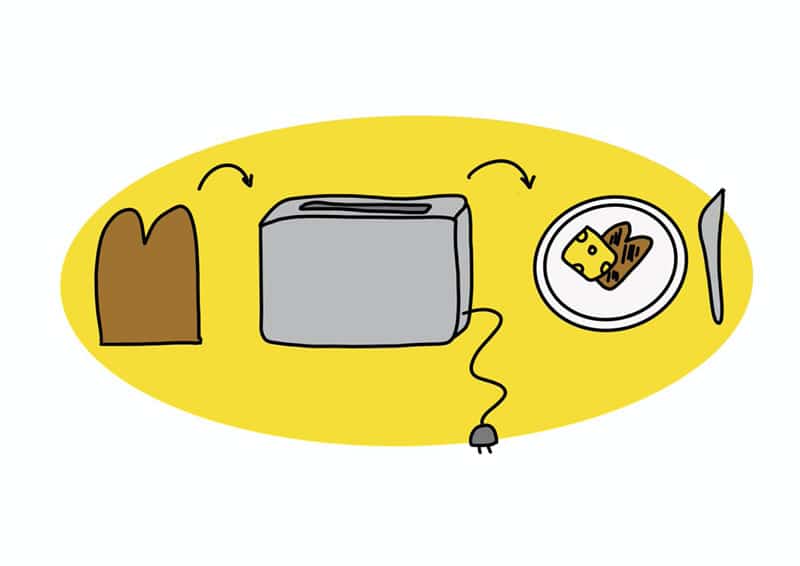Benefits of Process drawing

In our masterclass Process Drawing, we use Tom Wujec’s “toaster process” as a simple way to explain the method of process drawing. The idea is to visualize the steps of a process. One person may draw the process of toasting bread in one image, while another may use ten images. By drawing different processes as a team or within organizations, we gain insight into the steps involved and how different people experience the process. You can watch a video of Tom Wujec describing this process here.
In this blog, I will discuss 5 benefits of process drawing.
1. A shared vision
Process drawings are created by having all stakeholders draw the steps of the same process, from A to Z. One of the first things you’ll notice is that everyone experiences the process and its steps differently! By working together to create a shared chronological visual story, you create a shared vision. The level of detail in the steps of the process is determined by the participants, and they need to make a collective decision in this regard.
2. Simplifying complex realities
By visualizing complex processes, they automatically become clearer and simplified as unnecessary details are removed, and the steps are presented in a concrete and concise manner.
3. Visibility for the organization
Process drawings provide organizations with a clear understanding of their internal and/or external processes. As a manager or leader, you don’t have to know every detail from the inside out, but with process drawings, everyone can see the different steps involved. This allows everyone to know which step is taken by whom.
4. Visualizing the lived experience
When a process is described from a higher-level perspective, it creates a different image than when it is drawn from within. Process drawing allows for a representation of the internal experience of the process. Which steps does the team see? How long do the steps take? Who is responsible for each part of the process? All these aspects are covered.
5. People and collaboration in focus
Often, processes are described in a task-oriented manner, such as in a flowchart, without considering the people and collaboration involved. Drawing a process provides room for this. The starting point of process drawing is the personal vision of the steps each person takes in the process. This creates a simplified yet more comprehensive description of the process.
The future organization is organized horizontally, emphasizing the importance of connecting the “players” in the process. Process drawing aligns perfectly with this approach.
In conclusion, there are many important benefits of process drawing!
Interested in an engaging exercise? Draw the process of your morning routine with your household members! Then, compare and discuss the similarities and differences that become visible. You’ll be amazed by what emerges when you lay out the steps from each person’s perspective!
Business drawing at Draw your message
Draw your message helps you to amplify the impact of your communication. Simple, expressive drawings visually convey your message. Many people refer to this as business drawing or visual communication. Draw your message teaches you how to say more than a thousand words with just one image. We provide training sessions and workshops on business drawing. If you prefer a book, take a look at our book on business drawing: Conversations visualized
